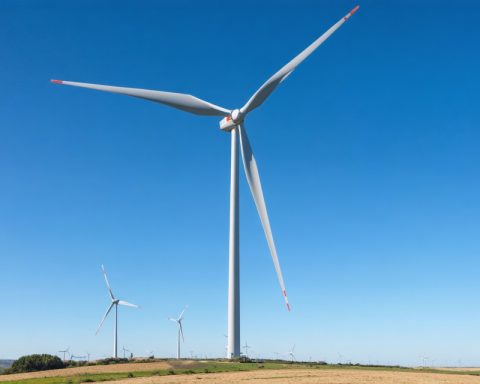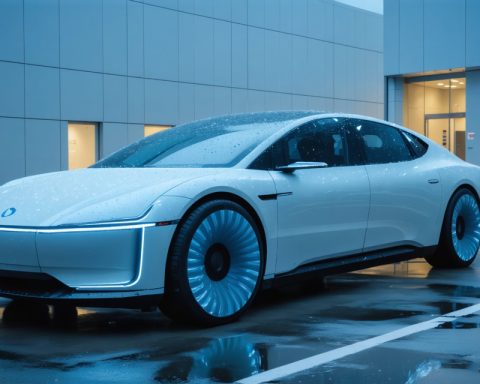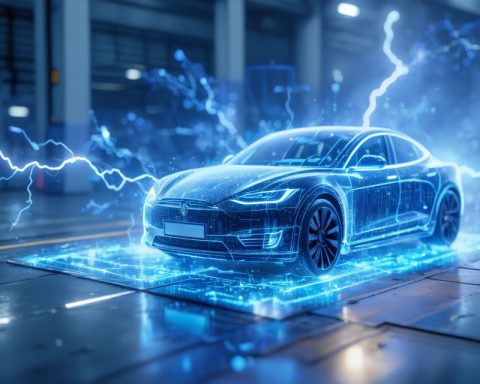- Azerbaijan is experiencing a surge in the adoption of electric vehicles (EVs), primarily from China, transforming its automotive landscape.
- 77% of the EVs imported in 2024 originated from Chinese manufacturers, driven by strategic market initiatives and policies.
- Companies like BYD are establishing a local presence, with plans to produce 500 electric buses annually in the Sumgayit Chemical Industrial Park, generating 600 local jobs.
- Government incentives, including tax exemptions and zero customs duties, support the shift towards electric mobility in Azerbaijan.
- Chinese EVs provide an affordable and sustainable option for Azerbaijani consumers relative to Western alternatives.
- While welcoming Chinese investments, Azerbaijan must balance reliance on Chinese manufacturing by cultivating partnerships with diverse global EV players to ensure economic stability and technological innovation.
- The path forward involves leveraging collaboration for a sustainable, diversified, and independent EV future.
Nestled in the heart of the Caucasus, Azerbaijan is witnessing an electric revolution on its roads. The rumble of traditional engines is giving way to the hum of electric vehicles (EVs), and China’s influence is undeniable. Like waves crashing on a shore, Chinese EVs are surging into the Azerbaijani market, propelled by strategic collaborations and forward-thinking policies.
A staggering 77 percent of the electric vehicles imported by Azerbaijan in 2024 hailed from Chinese manufacturers, a sharp increase from previous years. This isn’t just happenstance—it’s a well-orchestrated effort by Chinese companies to stake their claim in the region. Giants like BYD have meticulously charted a course to make Azerbaijan a central hub for electric buses in the area. A recently signed agreement sees local production sprouting in the Sumgayit Chemical Industrial Park, aiming to churn out 500 electric buses annually, promising to carve out 600 local jobs in the process.
But it’s not just the buses that are electrifying Azerbaijan’s dreams. Government incentives—exemption from value-added taxes and zero customs duties on critical EV components—have primed the country to embrace electric mobility with open arms. For Azerbaijani consumers, the decision is straightforward: Chinese EVs offer an affordable and sustainable alternative to Western counterparts, significantly slashing operating costs.
Yet, amid the green glow of progress, there’s a shadow. As the bonds between Azerbaijan and China grow stronger, they also become taut with potential vulnerabilities. The burgeoning dependence on Chinese manufacturing could tether Azerbaijan to a single market, risking both economic stability and innovation in the long term.
For Azerbaijan, the road ahead is about balance. Embracing the benefits of Chinese investments while weaving partnerships with other global EV players will be crucial. This approach can mitigate risk, foster technological innovation, and nurture a diverse and resilient EV ecosystem.
As China’s EV wave continues to rise, Azerbaijan stands at a crossroads. Its challenge is to ride this wave wisely—harnessing the power of collaboration for a sustainable, diversified, and independent future.
How China’s EV Invasion is Revolutionizing Azerbaijan’s Roads
Azerbaijan, positioned strategically in the heart of the Caucasus, is undergoing a significant revolution on its roads, marked by the sharp increase in electric vehicles (EVs). This shift represents not just a local change but a broader global trend with implications across various sectors. Here, we delve into additional insights about Azerbaijan’s growing EV market, the impact of Chinese investments, and what the future might hold.
The Electric Vehicle Market: A Broader Perspective
1. Global Market Forecasts & Industry Trends:
The global electric vehicle market is projected to continue its robust growth, with analysts forecasting a compound annual growth rate (CAGR) of over 20% through the 2020s. This trend is driven by technological advancements, government regulations, and increasing environmental awareness. As part of this trend, the Azerbaijani market is not merely following but capitalizing on global momentum.
2. Real-World Use Cases:
– Public Transport Transformation: The local production of 500 electric buses annually in Sumgayit Chemical Industrial Park speaks volumes about the shift in public transportation. This move not only reduces the carbon footprint but also leads to considerable savings in fuel and maintenance for the state-run transportation sector.
– Consumer Accessibility and Affordability: Chinese EVs provide affordability that is crucial for Azerbaijani consumers. They offer competitive pricing relative to Western models and operate with significantly lower fuel and maintenance costs, making them economically attractive.
Reviews & Comparisons: Chinese vs. Western EVs
Chinese electric vehicles often come with competitive advantages such as advanced battery technology, user-friendly features, and smart connectivity. However, they may face challenges in terms of brand recognition and perceived quality compared to established Western brands, which are often associated with luxury and high-end performance.
Controversies & Limitations:
1. Economic Dependence: While the influx of Chinese EVs boosts local employment and innovation, it also raises concerns about economic dependence on a single foreign market. Azerbaijan’s increasing reliance on Chinese imports potentially makes it vulnerable to economic fluctuations and geopolitical tensions.
2. Innovation Challenges: Solely focusing on Chinese partnerships may limit the scope for diversified technological innovation and foster a one-dimensional market growth strategy.
Insights & Predictions
Experts predict that as Azerbaijan’s EV market solidifies, the country is likely to explore alliances with other global EV manufacturers, enhancing diversity and resilience in their EV landscape. This strategic diversification will likely include partnerships with European and U.S. players, helping Azerbaijan to maintain technological parity and economic balance.
Actionable Recommendations
– Diversify Partnerships: Azerbaijan should consider forming partnerships with various international EV manufacturers to reduce dependency and encourage competitive pricing and innovation.
– Invest in Local R&D: Establishing local research and development centers will facilitate technological advancements, helping Azerbaijan become not just a consumer but also a creator in the EV sector.
– Enhanced Infrastructure: Investing in EV infrastructure, such as charging stations, will support widespread adoption and assure consumers of the feasibility and convenience of transitioning to electric vehicles.
Pros & Cons Overview
Pros:
– Economic growth through job creation and technological collaborations.
– Environmental benefits from reduced emissions.
– Lower operational costs for consumers.
Cons:
– Economic vulnerability due to dependency on Chinese imports.
– Limited innovation and market diversity risk.
For further insights into global trends and technological advances in the EV market, industry enthusiasts can visit BYD Global for a deeper dive into one of the leading forces in electric vehicle technology. Exploring diverse resources and expert analyses will empower consumers and stakeholders to make informed decisions in this rapidly-evolving sector.
















